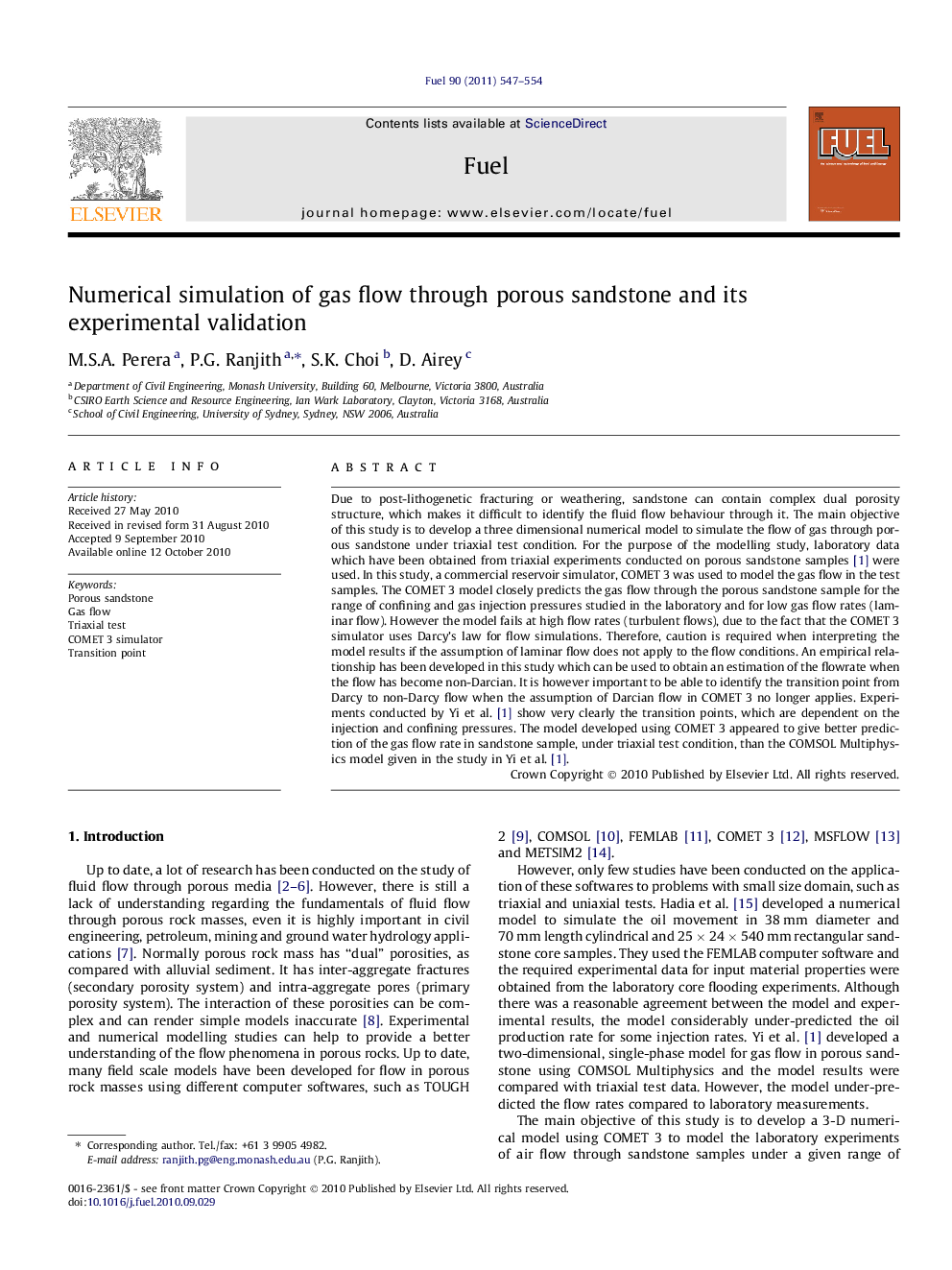| کد مقاله | کد نشریه | سال انتشار | مقاله انگلیسی | نسخه تمام متن |
|---|---|---|---|---|
| 206640 | 461196 | 2011 | 8 صفحه PDF | دانلود رایگان |

Due to post-lithogenetic fracturing or weathering, sandstone can contain complex dual porosity structure, which makes it difficult to identify the fluid flow behaviour through it. The main objective of this study is to develop a three dimensional numerical model to simulate the flow of gas through porous sandstone under triaxial test condition. For the purpose of the modelling study, laboratory data which have been obtained from triaxial experiments conducted on porous sandstone samples [1] were used. In this study, a commercial reservoir simulator, COMET 3 was used to model the gas flow in the test samples. The COMET 3 model closely predicts the gas flow through the porous sandstone sample for the range of confining and gas injection pressures studied in the laboratory and for low gas flow rates (laminar flow). However the model fails at high flow rates (turbulent flows), due to the fact that the COMET 3 simulator uses Darcy’s law for flow simulations. Therefore, caution is required when interpreting the model results if the assumption of laminar flow does not apply to the flow conditions. An empirical relationship has been developed in this study which can be used to obtain an estimation of the flowrate when the flow has become non-Darcian. It is however important to be able to identify the transition point from Darcy to non-Darcy flow when the assumption of Darcian flow in COMET 3 no longer applies. Experiments conducted by Yi et al. [1] show very clearly the transition points, which are dependent on the injection and confining pressures. The model developed using COMET 3 appeared to give better prediction of the gas flow rate in sandstone sample, under triaxial test condition, than the COMSOL Multiphysics model given in the study in Yi et al. [1].
Journal: Fuel - Volume 90, Issue 2, February 2011, Pages 547–554